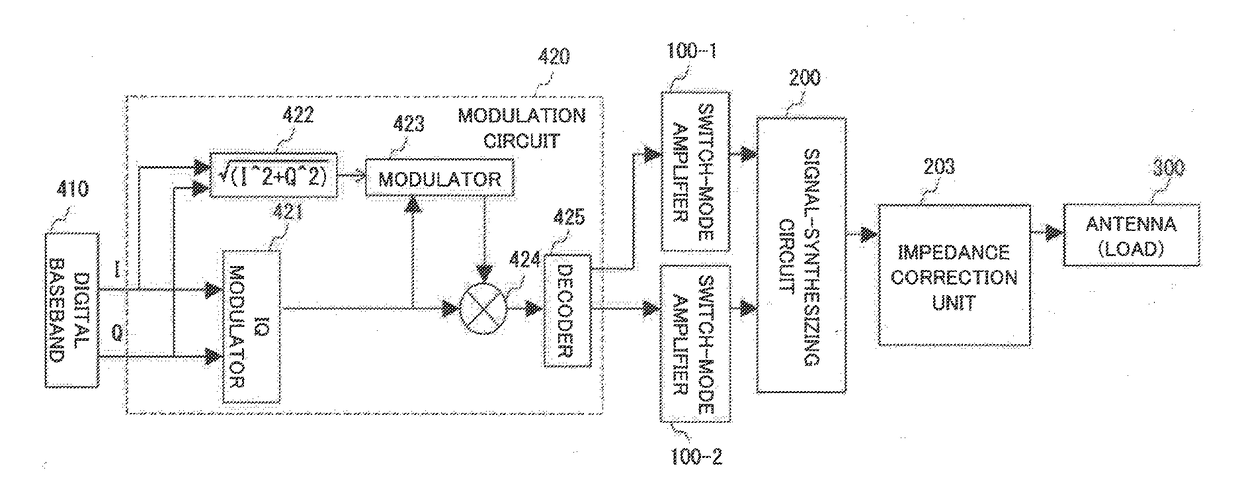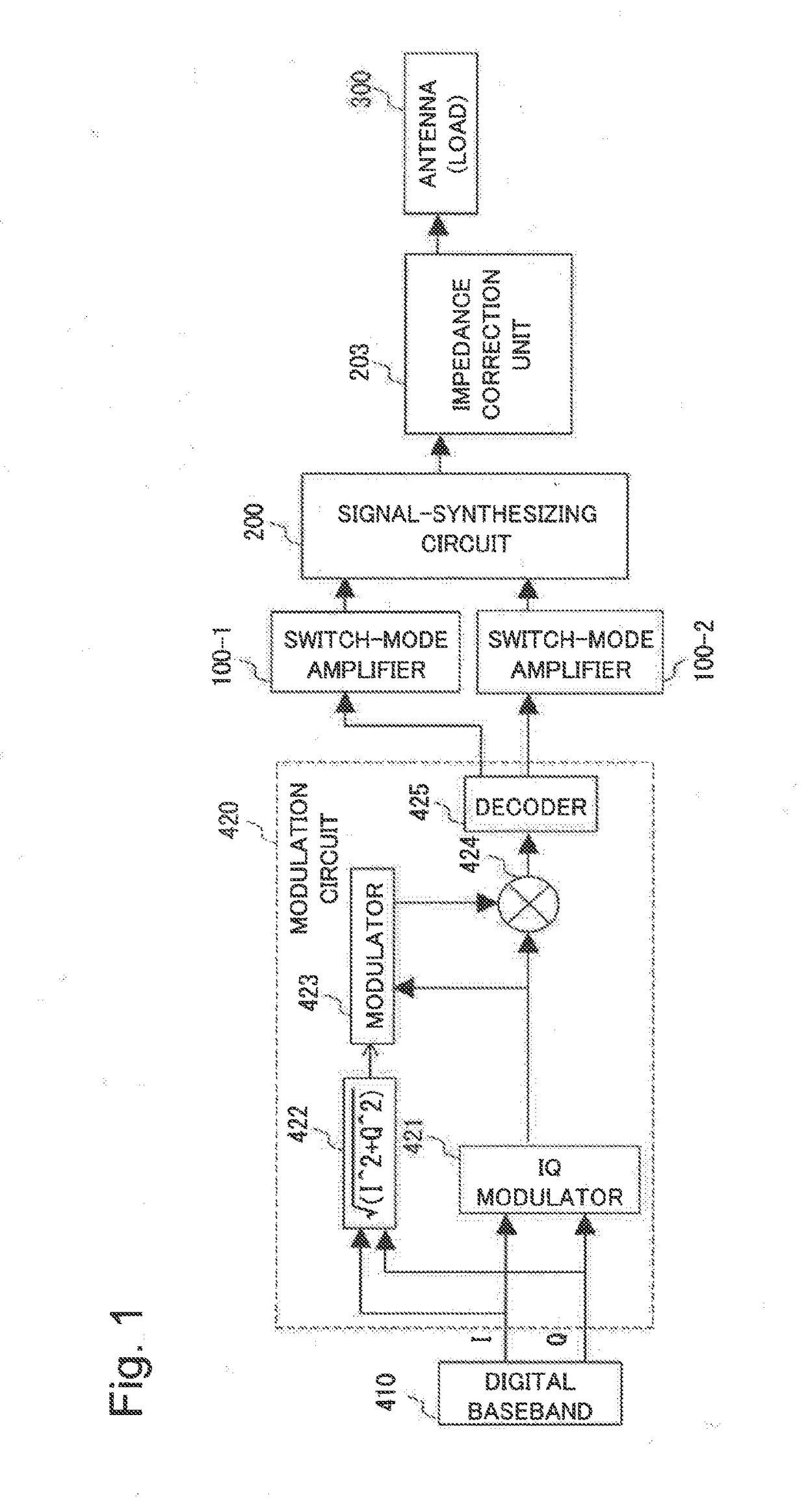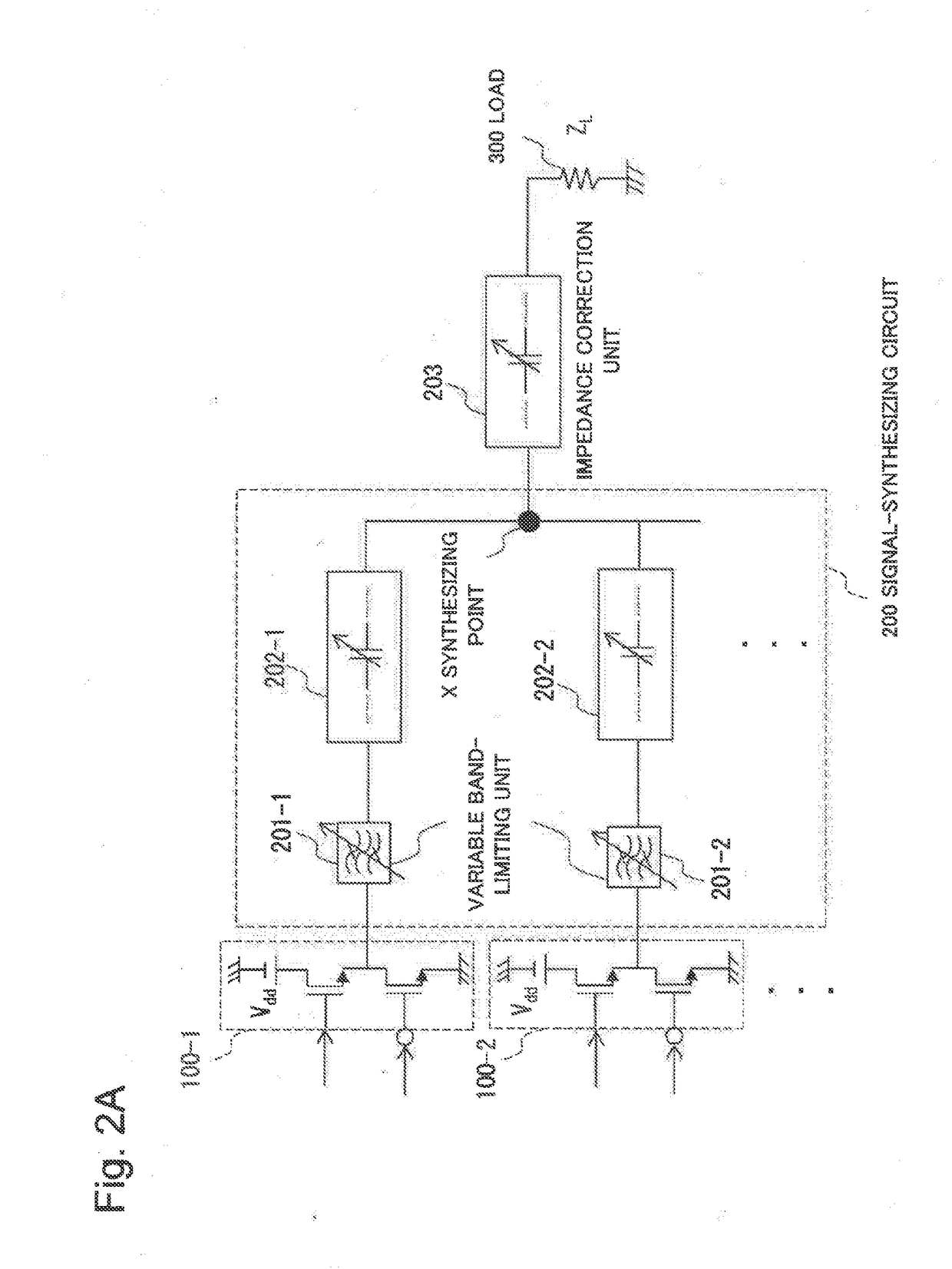Transmitter, signal synthesis circuit, and signal synthesis method
a signal synthesis circuit and signal synthesis technology, applied in the direction of amplifiers, dual/triple band amplifiers, semiconductor devices/discharge tubes, etc., can solve the problems of large loss of variable inductance, large size of signal synthesis circuit, and difficulty in achieving a downsized signal synthesis circuit compatible with a plurality of transmission frequencies. achieve the effect of maintaining impedance characteristics and not increasing circuit siz
- Summary
- Abstract
- Description
- Claims
- Application Information
AI Technical Summary
Benefits of technology
Problems solved by technology
Method used
Image
Examples
example embodiments
Configuration Example of Example Embodiments
[0061]A configuration example of a transmitter according to an example embodiment of the present invention will be described in detail with reference to FIG. 1. FIG. 1 is a block diagram illustrating an example of the overall configuration of the transmitter according to an example embodiment of the present invention. As illustrated in FIG. 1, the transmitter according to the present example embodiment includes at least a digital baseband (DBB; hereinafter abbreviated as DBB) signal generation unit 410, a modulation circuit 420, switch-mode amplifiers 100-1 and 100-2, a signal-synthesizing circuit 200, an impedance correction unit 203, and an antenna (load) 300. Note that the present example embodiment illustrates a case where the impedance correction unit 203 is disposed at a subsequent stage of the signal-synthesizing circuit 200 separately from the signal-synthesizing circuit 200. However, in some cases, the impedance correction unit 20...
PUM
 Login to View More
Login to View More Abstract
Description
Claims
Application Information
 Login to View More
Login to View More - R&D
- Intellectual Property
- Life Sciences
- Materials
- Tech Scout
- Unparalleled Data Quality
- Higher Quality Content
- 60% Fewer Hallucinations
Browse by: Latest US Patents, China's latest patents, Technical Efficacy Thesaurus, Application Domain, Technology Topic, Popular Technical Reports.
© 2025 PatSnap. All rights reserved.Legal|Privacy policy|Modern Slavery Act Transparency Statement|Sitemap|About US| Contact US: help@patsnap.com



